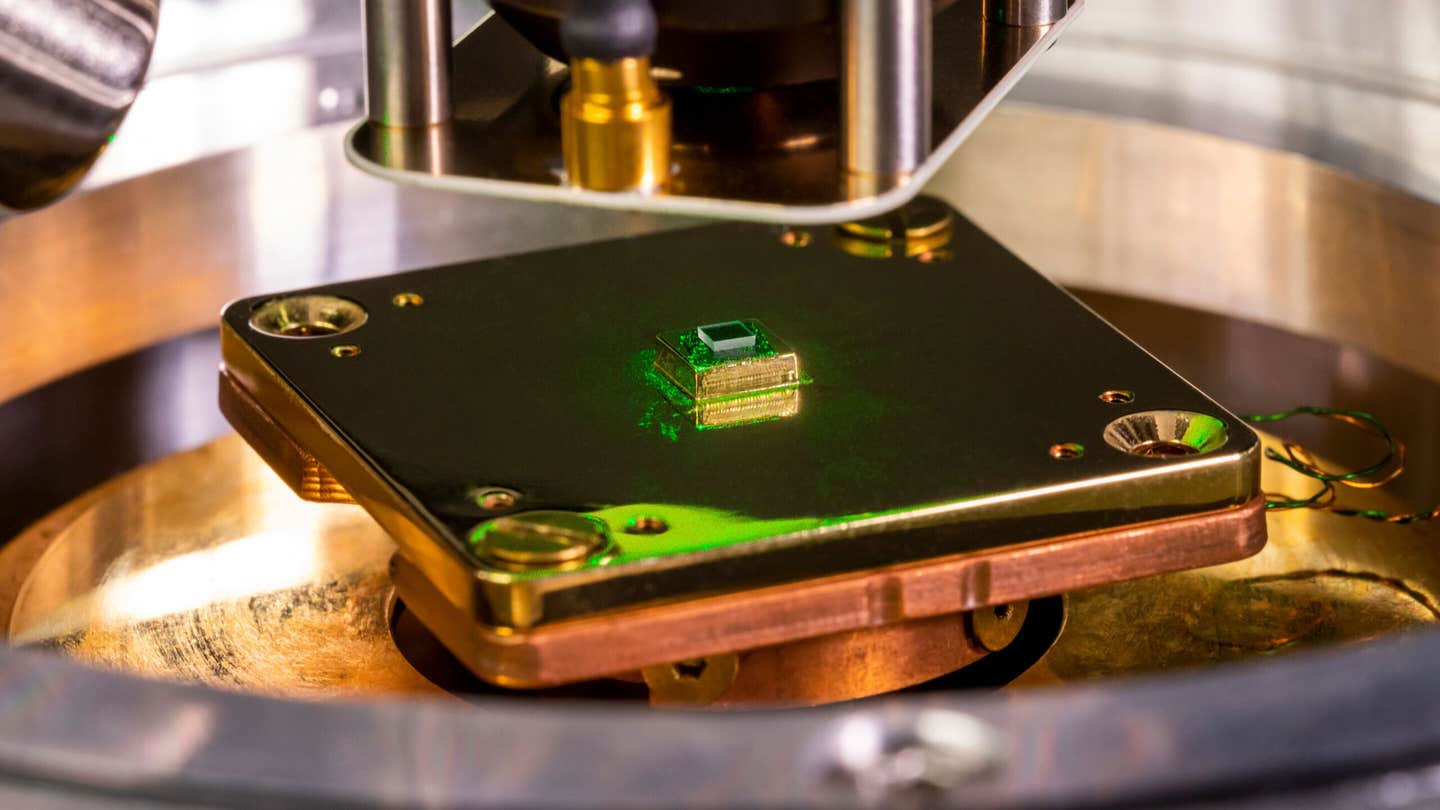Molecular jackhammers use near-infrared light to kill 99% of cancer cells
Scientists use vibrating molecules and near-infrared light to destroy cancer cells, opening a new path in non-invasive cancer treatment.

A new cancer treatment uses vibrating dye molecules triggered by near-infrared light to rip cancer cells apart without drugs or heat. (CREDIT: Getty Images)
Molecular vibrations, when paired with near-infrared (NIR) light, have opened a new chapter in cancer treatment. Instead of relying on radiation or chemicals, scientists now use finely tuned molecules that vibrate as one unit to tear open cancer cells. These molecules, known as molecular jackhammers, offer a non-invasive and highly effective way to kill tumors from the inside out.
Researchers have discovered that activating these molecules with near-infrared light sets off whole-molecule vibrations. These vibrations are powerful enough to destroy the membrane of a cancer cell, leading to necrosis—the rapid death of the cell.
This method doesn’t rely on heat or chemical reactions, so it's not slowed down or blocked by the body’s natural defenses like reactive oxygen species inhibitors. That makes it a game-changer for therapies that usually face resistance or fail to reach deep tissue.
How Near-Infrared Light Powers Cell Destruction
Traditional light therapies often use ultraviolet or visible light, but these don’t travel far in the body. They barely penetrate past a millimeter into tissues like skin or muscle. In contrast, near-infrared light can pass through up to 10 centimeters, or about 4 inches. This range makes it ideal for reaching tumors that lie deep beneath the skin.
Near-infrared light falls within the “optical therapeutic window,” meaning it doesn’t get absorbed as easily by blood or water in the body. This quality allows doctors to deliver targeted energy without harming nearby tissues. Unlike ultraviolet light, it’s safe and effective for in-body treatments.
The method developed by scientists at Rice University and partners involves aminocyanines, a class of dye molecules long used in medical imaging. These molecules attach themselves to the outer membrane of cells. When exposed to NIR light, they vibrate across their entire structure—a process called vibronic-driven action (VDA). This mechanical action punches holes in the cell membrane, killing the cell quickly.
Related Stories
Why Molecular Jackhammers Are So Effective
These molecules work by creating whole-body molecular vibrations that resonate at subpicosecond speeds—less than one trillionth of a second. Instead of shaking apart just one part of a molecule, the entire structure moves in sync. This “ultrafast breathing mode” is what makes them lethal to cells.
The phenomenon that drives this action is called vibronic coupling. It combines electronic oscillations (plasmons) and atomic vibrations (phonons) into one hybrid movement. This interaction spreads energy evenly throughout the molecule, which leads to a powerful, unified strike against the cell membrane.
In lab tests, these molecules wiped out 99% of human melanoma cells grown in dishes. In mouse models, half of the animals treated with this approach had complete remission of their tumors. This level of success marks a big leap forward for cancer therapies that often struggle with resistance and incomplete tumor elimination.
Comparing the New Tech to Previous Efforts
Before molecular jackhammers, researchers had tried other forms of light-activated molecules. Feringa-type motors, for example, are designed to spin like drills when hit with UV or visible light. These molecules have been used to poke holes in cell membranes, but they spin much slower and can’t operate under NIR light. They also don’t travel as deep into tissue, which limits their use.
Other molecules known as Dube hemithioindigo switches can generate reactive oxygen species (ROS) that lead to cell death. But ROS-based methods can be neutralized by the body’s natural enzymes. Also, the slower rotation speed of these switches isn’t enough to physically disrupt cells like the jackhammers do.
In contrast, the new method uses light at lower intensity—just 80 milliwatts per square centimeter for 2.5 minutes—and still achieves complete cell destruction. That’s 10 to 50 times less power than what’s used in photothermal and photodynamic therapies. And the aminocyanine molecules are effective at doses as low as 500 nanomoles per liter, a concentration much lower than what’s typically required.
These properties make molecular jackhammers not only more powerful but also safer and more energy-efficient.
A Different Kind of Cellular Assault
James Tour, the Rice chemist leading the effort, explains the concept simply: “These are like jackhammers on the molecular scale.” The vibrations, which are symmetrical and spread through the entire molecule, shatter the cancer cell’s outer barrier. It’s a physical attack that cells can’t resist or adapt to.
Lead author Ciceron Ayala-Orozco described how the molecules were designed to cling to the lipid bilayer—the outer coating of the cell. Their structure makes it easy for them to anchor in place and deliver their vibrating punch exactly where it’s needed. He saw potential in using plasmons not just for imaging or sensing but as active agents in killing disease.
To study these effects more deeply, researchers at Texas A&M University used simulations to understand how the energy flowed through the molecule. They confirmed that the oscillations occurred fast and in harmony, supporting the mechanical destruction of the cell membrane. Meanwhile, mouse studies took place at University of Texas MD Anderson Cancer Center under the guidance of Dr. Jeffrey Myers.
What makes this technique unique is its departure from traditional mechanisms. It doesn’t rely on heat, chemicals, or radiation. Instead, it uses motion at the molecular level—movement so fast and so precise that cancer cells stand no chance.
Other Breakthroughs in Near-Infrared Medicine
The success of molecular jackhammers highlights the broader potential of near-infrared light in medicine. Already, NIR light is being used in several advanced techniques that go far beyond cancer treatment.
One fast-growing field is functional near-infrared spectroscopy (fNIRS). This non-invasive brain scan tracks blood flow to measure brain activity. It’s especially useful for newborns or patients with epilepsy or stroke, where traditional scans may be risky or unavailable.
Photobiomodulation therapy (PBMT) is another promising area. It uses NIR light to reduce inflammation, manage pain, and speed up wound healing. This therapy is particularly useful for treating chronic conditions and speeding recovery in sports injuries.
Doctors are also using NIR light in imaging systems during surgery. Special dyes light up cancerous tissue so surgeons can remove tumors more precisely. Some probes even respond to specific proteins, making it easier to target hard-to-see cancers without harming healthy tissue.
Another exciting use is in drug delivery. Tiny particles or gels can be designed to release medicine only when exposed to NIR light. This method allows for precise control, getting medicine where it’s needed without affecting the rest of the body.
The Future of Vibration-Based Cancer Therapies
The findings from Rice University and its collaborators signal a shift in how cancer might be treated in the future. By focusing on mechanical forces rather than chemicals or heat, researchers can bypass many of the defenses that cancer cells use to survive.
The molecular jackhammer concept takes advantage of simple, safe materials and pairs them with the deep reach of NIR light. Its success in both lab and animal models shows it could be ready for larger trials soon.
More than just a scientific breakthrough, this approach represents a new way of thinking about medical treatment—one that combines physics, chemistry, and biology into a unified assault on disease.
As Ayala-Orozco noted, the goal wasn’t just to vibrate molecules for fun. It was to turn that energy into something useful. And in this case, it was used to destroy one of the most resilient enemies of modern medicine.
Research findings are available online in the journal Nature Chemistry.
Note: Materials provided above by The Brighter Side of News. Content may be edited for style and length.
Like these kind of feel good stories? Get The Brighter Side of News' newsletter.



